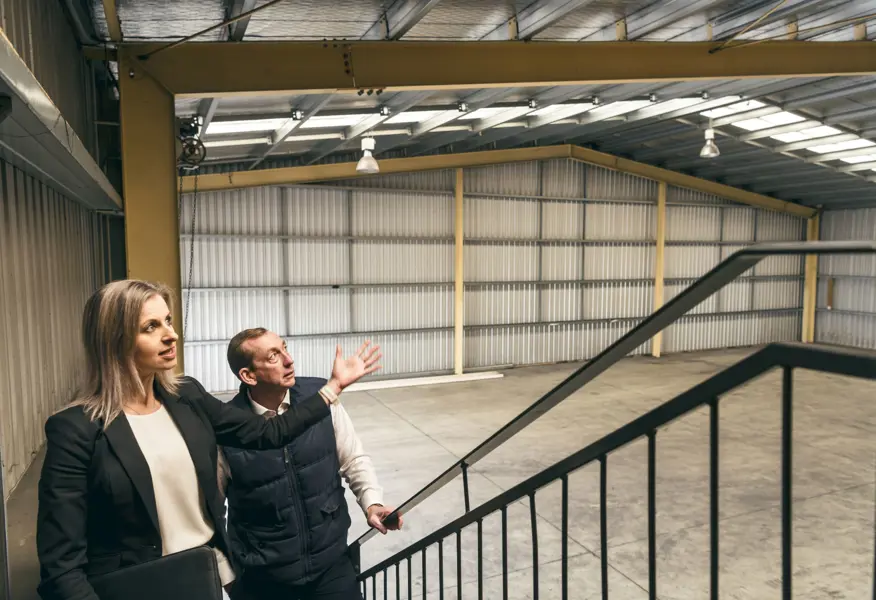Industrial Property: Returns are at an all-time high
Thursday, 19 August 2021

By continuing, you agree to our terms of use and privacy policy
Instructions on how to reset your password will be sent to the email below.
Your password reset link has been sent. Please check your inbox and follow the instructions provided.
Thursday, 19 August 2021

Property prices climbed further in November, early signals suggest price growth will continue though more moderately, according to the latest data from the Real Estate Institute of New Zealand (REINZ), source of the most complete and accurate real estate data in New Zealand.
Median prices for residential property across New Zealand increased by 23.8% from $747,000 in November 2020 to $925,000 in November 2021 — a new record high. While the median house price for New Zealand excluding Auckland increased annually by 26.0% from $615,000 to a new record of $775,000. There was a monthly increase in median prices of 3.7% across New Zealand and 3.2% for New Zealand excluding Auckland.
Jen Baird, Chief Executive of REINZ, says: “The market has settled back into its stride — returning to business as near-usual across the board. November shows an active market where property prices continue to increase, stimulated by demand as New Zealand prepared to leave Alert Levels behind. “Across New Zealand, there was an annual increase of 23.8% in median prices — with a new record high of $925,000 in November 2021 and an increase of 3.7% month-on-month. We’re seeing a firm property market, with all regions experiencing annual growth and 24 territorial authorities reaching new record medians. “FOMO — fear of missing out — is beginning to dissipate. The enduring strength of property prices means some vendors may be less inclined to act now, without fear of missing their preferred prices later. While the supply versus demand imbalance continues to push prices upwards, across New Zealand inventory levels increased 5.1% annually and listings increased 9.0% — providing buyers more choice and giving reluctant sellers confidence that if they take their current property to market, they will be able to buy their next one. “Despite steady growth, headwinds are gathering. Government measures to moderate the New Zealand property market, the Reserve Bank’s OCR increases and growing challenges around financing as banks tighten their lending criteria are aligning. While the longer-term impacts of these changes will play out over the coming months, the strength of the market suggests that the growth trend will continue — albeit with a more moderate trajectory,” Baird adds.
“The Auckland region has shown continued strength in November with prices increasing 26.2% year-on-year to a record median of $1,300,000. Six of the seven districts in Auckland reached record median prices: Auckland City ($1,540,000), Manukau City ($1,235,000), North Shore City ($1,555,000), Papakura District ($1,173,000), Rodney District ($1,310,000), and Waitakere City ($1,199,000). Auckland has seen an increase in inventory levels of 4.5% year-on-year, along with an uplift in listings by 10.4% year-on-year. Properties are spending a shorter time on the market, with the median days to sell at 30 days — Auckland’s lowest days to sell since December 2020.
“Buyer numbers are starting to increase as the market is invigorated with more choice. Many buyers remain confident that prices will hold, and demand will remain strong over the summer period with some noting the possible increase in kiwis arriving home MIQ-free in early 2022. Investor numbers have declined — the legislative changes as well as the need for upgrades to meet Healthy Homes Standards is adding to the increasing costs for investors. When Auckland’s borders open, it will be interesting to see if those who have been reassessing their lifestyle and how they want to use their finances move to other areas of the country.” (REINZ)
The current Days to Sell of 30 days is less than the 10-year average for November which is 33 days. There were 14 weeks of inventory in November 2021 which is 3 weeks more than the same time last year.

Property prices climbed further in November, early signals suggest price growth will continue though more moderately, according to the latest data from the Real Estate Institute of New Zealand (REINZ), source of the most complete and accurate real estate data in New Zealand.
Median prices for residential property across New Zealand increased by 23.8% from $747,000 in November 2020 to $925,000 in November 2021 — a new record high. While the median house price for New Zealand excluding Auckland increased annually by 26.0% from $615,000 to a new record of $775,000. There was a monthly increase in median prices of 3.7% across New Zealand and 3.2% for New Zealand excluding Auckland.
Jen Baird, Chief Executive of REINZ, says: “The market has settled back into its stride — returning to business as near-usual across the board. November shows an active market where property prices continue to increase, stimulated by demand as New Zealand prepared to leave Alert Levels behind. “Across New Zealand, there was an annual increase of 23.8% in median prices — with a new record high of $925,000 in November 2021 and an increase of 3.7% month-on-month. We’re seeing a firm property market, with all regions experiencing annual growth and 24 territorial authorities reaching new record medians. “FOMO — fear of missing out — is beginning to dissipate. The enduring strength of property prices means some vendors may be less inclined to act now, without fear of missing their preferred prices later. While the supply versus demand imbalance continues to push prices upwards, across New Zealand inventory levels increased 5.1% annually and listings increased 9.0% — providing buyers more choice and giving reluctant sellers confidence that if they take their current property to market, they will be able to buy their next one. “Despite steady growth, headwinds are gathering. Government measures to moderate the New Zealand property market, the Reserve Bank’s OCR increases and growing challenges around financing as banks tighten their lending criteria are aligning. While the longer-term impacts of these changes will play out over the coming months, the strength of the market suggests that the growth trend will continue — albeit with a more moderate trajectory,” Baird adds.
“The Auckland region has shown continued strength in November with prices increasing 26.2% year-on-year to a record median of $1,300,000. Six of the seven districts in Auckland reached record median prices: Auckland City ($1,540,000), Manukau City ($1,235,000), North Shore City ($1,555,000), Papakura District ($1,173,000), Rodney District ($1,310,000), and Waitakere City ($1,199,000). Auckland has seen an increase in inventory levels of 4.5% year-on-year, along with an uplift in listings by 10.4% year-on-year. Properties are spending a shorter time on the market, with the median days to sell at 30 days — Auckland’s lowest days to sell since December 2020.
“Buyer numbers are starting to increase as the market is invigorated with more choice. Many buyers remain confident that prices will hold, and demand will remain strong over the summer period with some noting the possible increase in kiwis arriving home MIQ-free in early 2022. Investor numbers have declined — the legislative changes as well as the need for upgrades to meet Healthy Homes Standards is adding to the increasing costs for investors. When Auckland’s borders open, it will be interesting to see if those who have been reassessing their lifestyle and how they want to use their finances move to other areas of the country.” (REINZ)
The current Days to Sell of 30 days is less than the 10-year average for November which is 33 days. There were 14 weeks of inventory in November 2021 which is 3 weeks more than the same time last year.


Read more

Read more
From the top of the North through to the deep South, our salespeople are renowned for providing exceptional service because our clients deserve nothing less.
Managing thousands of rental properties throughout provincial New Zealand, our award-winning team saves you time and money, so you can make the most of yours.
With a team of over 850 strong in more than 88 locations throughout provincial New Zealand, a friendly Property Brokers branch is likely to never be too far from where you are.